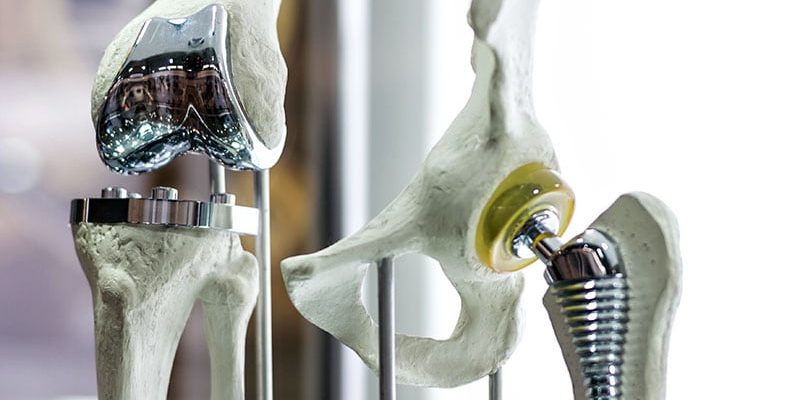Wait times in Canada for procedures like hip and knee replacements were longer than 6 months at the beginning of the pandemic and in 2022, according to new data from the Canadian Institute for Health Information (CIHI). Healthcare leaders hope that an infusion of funding from the federal government will reduce these wait times.
CIHI is an independent, nonprofit organization that tracks data on the frequency and volume of procedures, surgeries, medication usage, and healthcare costs. In a March 2023 update, the organization provided data on wait times for cancer surgeries, cataract surgeries, and knee replacements.
It observed that in 2020, 56% of Canadians who needed a hip replacement and 47% of Canadians who needed a knee replacement were treated within the benchmark of 6 months. In 2019, however, 75% and 70% of Canadians received hip replacements and knee replacements, respectively, within the 6-month benchmark.

Tracy Johnson
“The [6-month] benchmark is from the time the surgeon says surgery is needed until the time surgery is performed,” Tracy Johnson, CIHI’s director of health system analytics, told Medscape Medical News.
Achievement of the 6-month benchmark improved in 2021. Overall, 65% of hip replacements and 59% of knee replacements met that target. But this improvement was not sustained. In 2022, about 57% of patients received their hip replacement within the recommended time frame, and about 50% of patients received their knee replacement within the 6-month time frame.
Why the Delay?
The various waves of the pandemic contributed to the failure of the healthcare system to meet the benchmarks for procedures that are not life-threatening. But other factors also are at play, said Johnson. The demand for procedures and surgeries is growing with the aging of the Canadian population, and a shortage of healthcare workers is increasing the challenge of meeting the benchmarks, she explained.
For its part, the federal government is providing short-term relief to address the pressures on Canada’s healthcare system. It is providing $6.5 billion through Canada Health Transfer (CHT) top-ups to the provinces and territories. The annual CHT payments for 2023-2024, which are separate from the top-ups, amount to $49.4 billion.
“The focus of some of this [federal] funding has been around data to track healthcare workers across the country in a consistent way and understand where the deficits are,” said Johnson.
Starting in 2023-2024, the federal government also will provide $505 million over 5 years to CIHI, Canada Health Infoway, and other federal data partners. The provinces and territories will collaborate with these organizations to develop new health data indicators, create a Centre of Excellence for health worker data, promote digital health tools, and find ways to use data to improve the safety and quality of healthcare.
Findings Not Surprising
Canadian Medical Association (CMA) President Alika Lafontaine, MD, an anesthesiologist in Grande Prairie, Alberta, told Medscape that the results of the CIHI report confirmed previous observations.

Dr Alika Lafontaine
“The results of this analysis are not a surprise to anyone that works in healthcare,” said Lafontaine. “After the first wave of the pandemic, we shut down the majority of surgical capacity across the country. We were literally moving from running several wards to running one or two wards. The reason for that is that we had an unknown pathogen. It was a reasonable reaction.”
A decade ago, the bottlenecks in the system were a lack of physical space and a lack of equipment to perform procedures. Those bottlenecks have been removed, and the current challenge is a shortage of healthcare workers in the system, said Lafontaine.
Public System Improvements
“Ten or 15 years ago, we didn’t have the operating room space or equipment to do these procedures,” said Lafontaine. “In the majority of situations, it’s because we don’t have the people to do the work. Depending on the hospital, the people that are unavailable may be very different. In one hospital, you may have a shortage of anesthesiologists, and in another one, you may have a shortage of surgeons.”
New funding will help to reduce the number of patients who wait too long for procedures like hip and knee replacements. In addition, pan-Canadian medical licensure, which would end the provincial licensure system’s limitations on professional practice, is being considered. Such a step could enhance physician mobility throughout the country and help alleviate the stress on the health system.
Lafontaine emphasized that the results of the CIHI report do not signal that private healthcare is a way to reduce the public queue for procedures and surgeries.
“The best way for us to ensure equitable access to healthcare, which should be a foundational principle of access to care, is to have a publicly funded system,” said Lafontaine. “I think we can make changes in the public system.”
Johnson and Lafontaine report no relevant financial relationships.
Canadian Institute for Health Information. Accessed April 3, 2023. Full text.
Source: Read Full Article
